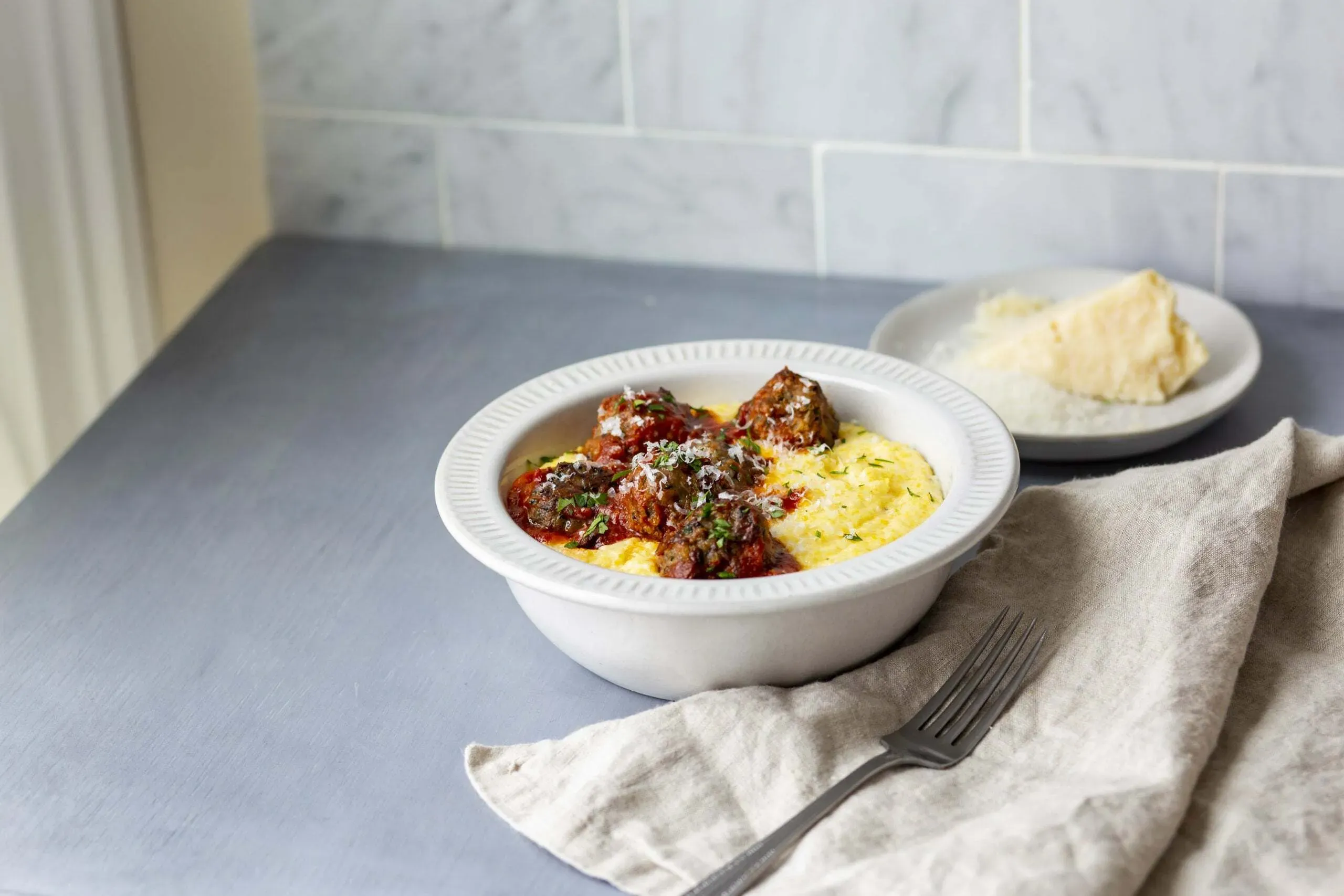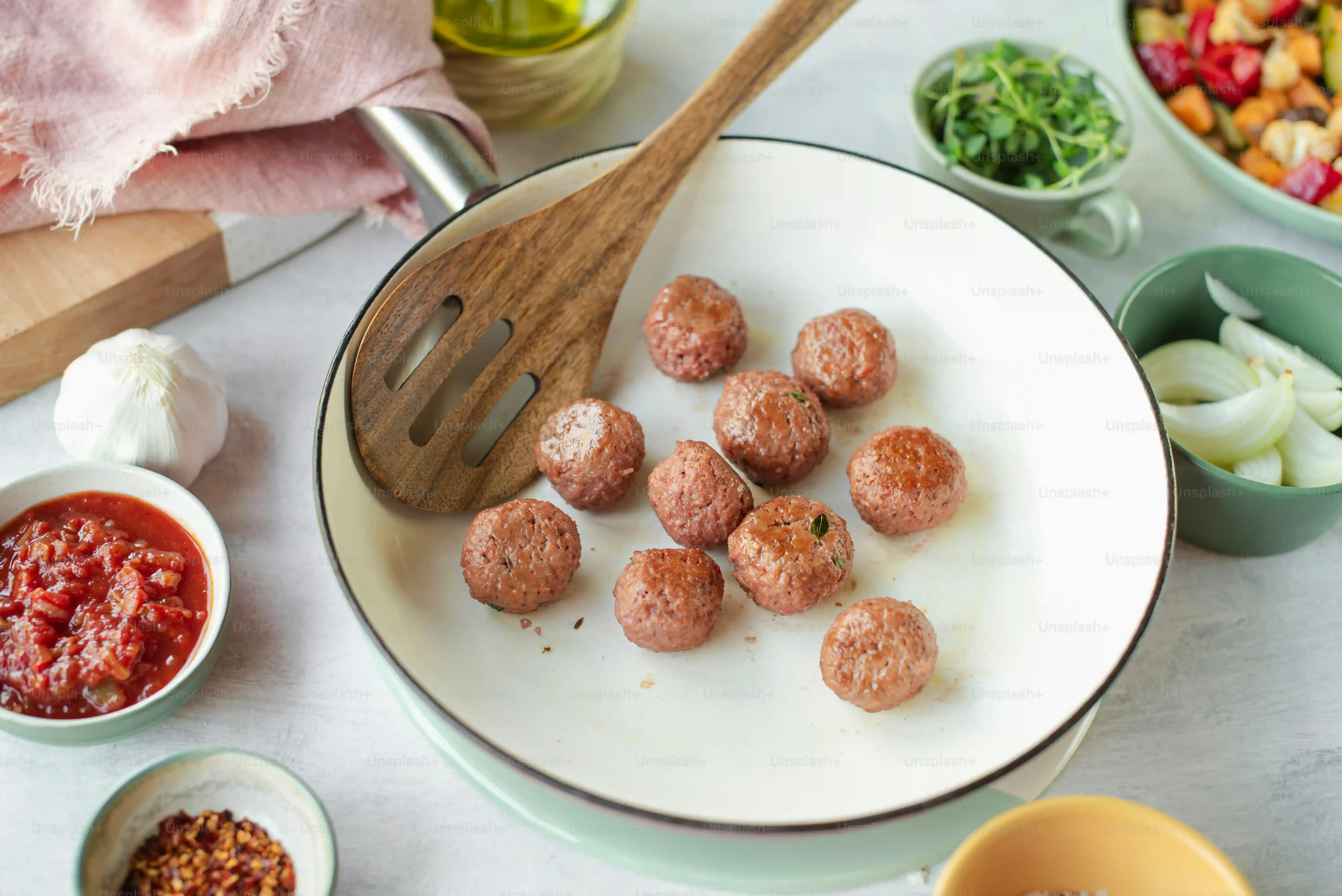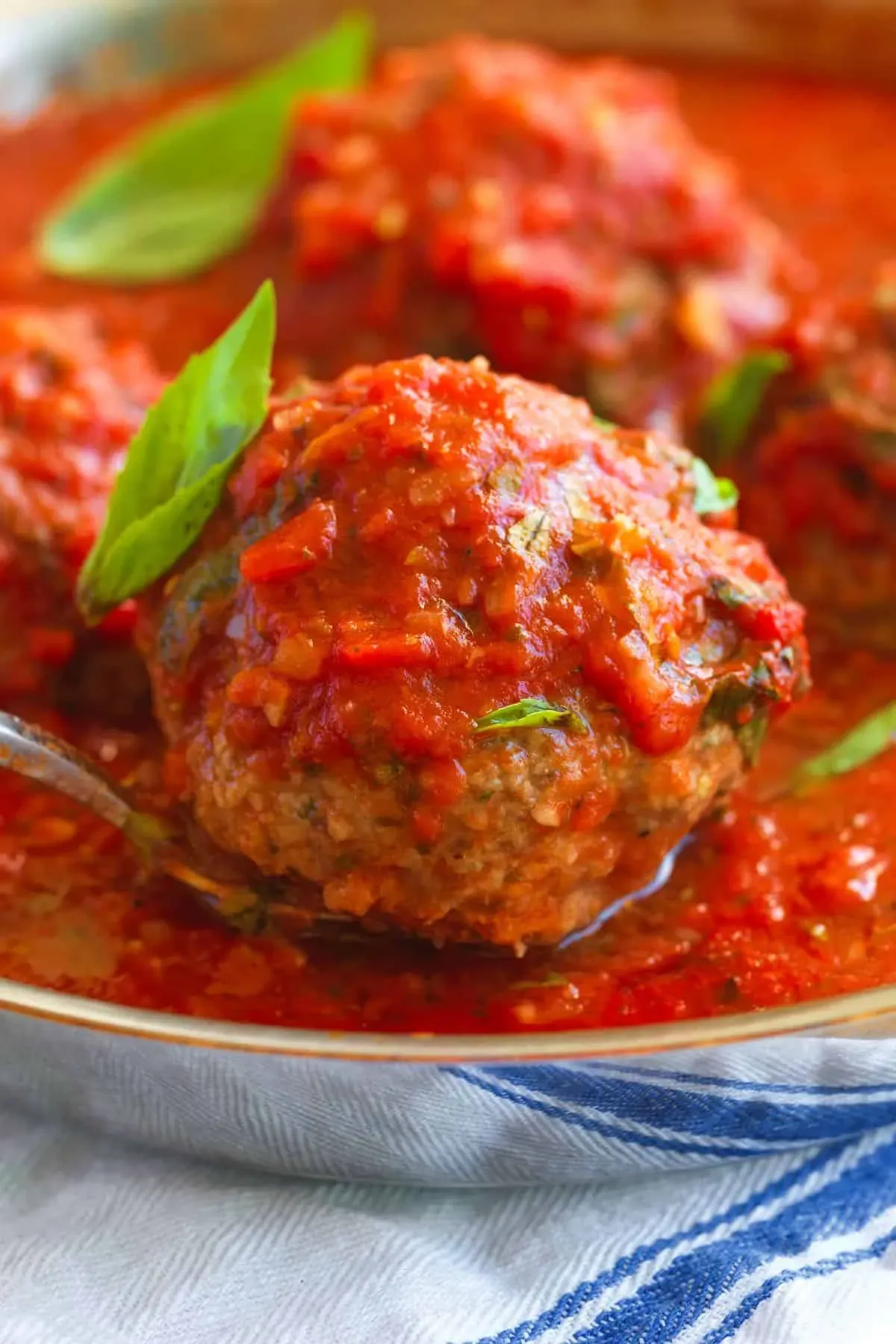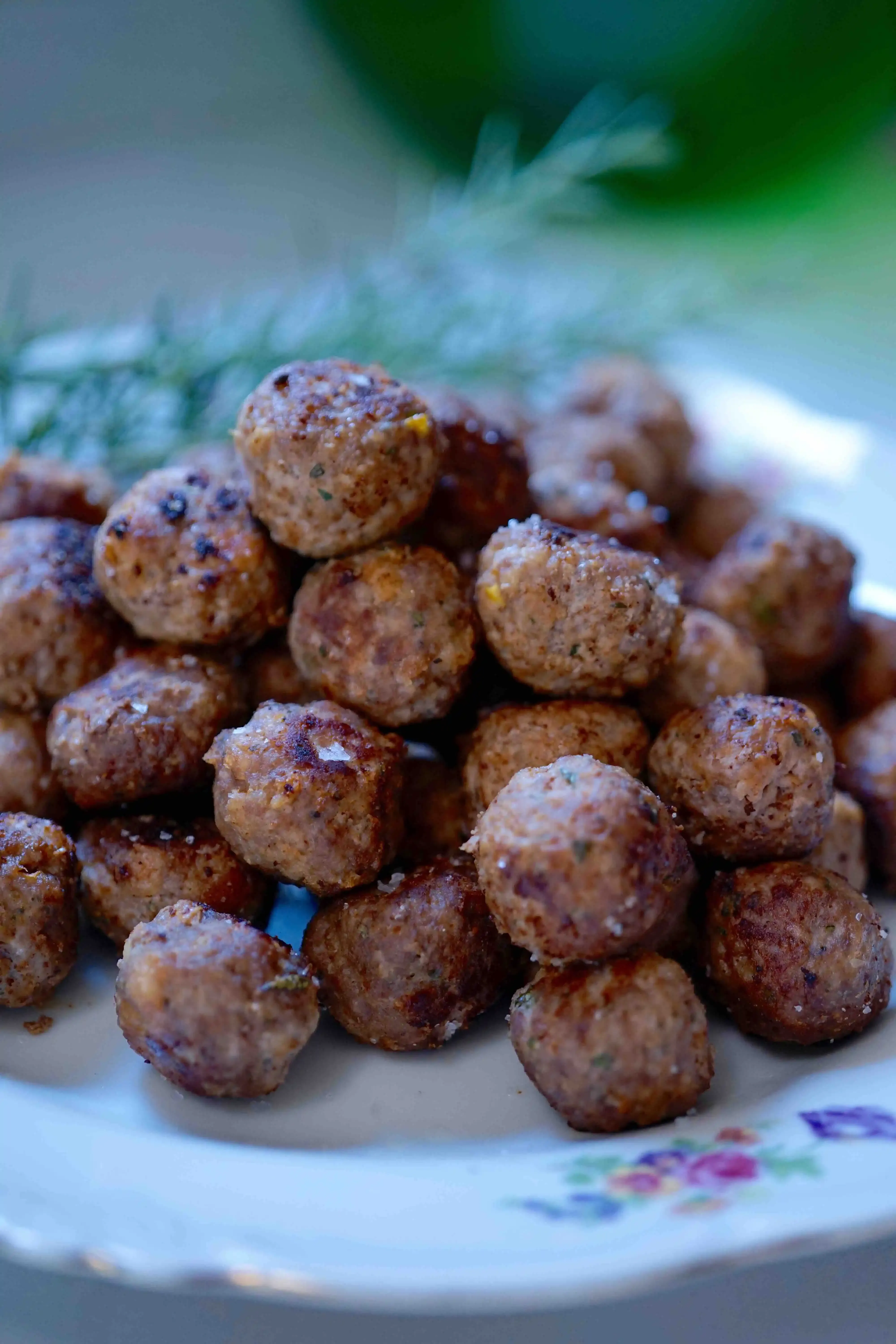Table of Contents
Forget those sad, dry orbs drowning in jarred sauce. We're talking about the real deal here: a proper northern italian meatball recipe. This isn't the heavy, bread-crumb-laden kind you might find further south. Up north, things are often a bit lighter, perhaps more focused on the quality of the meat itself, sometimes incorporating different binders or even simmering in a rich broth instead of just tomato sauce. Think tender bites packed with flavor, not cannonballs designed to sink to the bottom of the pot. If you've struggled to get that perfect texture, that juicy interior, or felt your homemade meatballs were just... missing something, you're in the right place. We'll walk you through crafting a northern italian meatball recipe that delivers on taste and texture, covering the essential ingredients, the method, and the small tricks that make a big difference. Get ready to elevate your meatball game beyond recognition.
Why Northern Italian Meatballs Stand Apart

Why Northern Italian Meatballs Stand Apart
Subtle Differences, Big Flavor
so you're diving into the world of northern Italian cooking, specifically meatballs. Good choice. It's not just about throwing meat and breadcrumbs together. Up north, they tend to be a bit more... refined, maybe? Less tomato sauce-heavy in the traditional sense. Think about how they use butter and lighter sauces in pasta dishes compared to the south's rich, slow-cooked ragus. That philosophy extends to their meatballs. You often see a focus on really good quality meat – maybe a mix of veal, pork, and beef, sometimes even just veal or pork. The binder is key too; often it's just breadcrumbs soaked in milk or broth, not a ton of eggs or cheese mixed directly into the meatball itself, though variations exist.
Beyond the Red Sauce
Another major departure you'll find with a northern italian meatball recipe is how they're cooked and served. While simmering in tomato sauce is a classic everywhere, northern variations might see meatballs gently cooked in a light broth, sometimes with white wine, or even pan-fried and served simply with lemon or herbs. It's less about coating them in a thick sauce and more about letting the flavor of the meat and the delicate seasoning shine through. It changes the whole experience. You get the texture, the tenderness, without the dominance of a strong tomato base. It's a different kind of comfort food, one that feels perhaps a touch more elegant.
Key characteristics often found in northern Italian meatballs:
- Often use a mix of meats, potentially including veal.
- Binders lean towards bread soaked in liquid (milk/broth).
- Cooking methods can include simmering in broth or frying.
- Sauces are often lighter, sometimes white wine or butter-based, or simply served plain.
Ingredients for Your Northern Italian Meatball Recipe

Ingredients for Your Northern Italian Meatball Recipe
let's talk about what goes into these little flavor bombs. When you're making a proper northern italian meatball recipe, the ingredients are arguably the most critical part. You can't fake good meat. A classic northern approach often involves a mix – maybe equal parts ground veal, pork, and beef. Veal adds tenderness, pork brings moisture and flavor, and beef provides a bit of structure and depth. Sometimes, you'll see recipes calling for just veal or pork. Avoid that super lean stuff; you need a bit of fat for juiciness. The binder is usually stale bread, crusts removed, soaked in milk or broth and squeezed dry. This creates a lighter texture than using just dry breadcrumbs or a ton of eggs. Don't skimp on the Parmesan cheese – the real stuff, grated fresh. And fresh herbs like parsley, maybe a hint of garlic, salt, and pepper are your flavor foundation. It's not complicated, but quality matters.
Crafting the Perfect Northern Italian Meatball Recipe: A StepbyStep Guide

Crafting the Perfect Northern Italian Meatball Recipe: A StepbyStep Guide
so you have your beautiful ingredients ready for this northern italian meatball recipe. Now for the fun part – getting your hands dirty, literally. The key here is gentle handling. You don't want to overwork the meat mixture; that's a fast track to tough meatballs. Start by soaking your stale bread in the milk or broth, then squeeze out as much liquid as you can. Crumble it into a large bowl. Add your ground meats, grated Parmesan, chopped fresh parsley, maybe that whisper of garlic, salt, and pepper. Now, dive in with clean hands. Mix everything together very gently, just until it's combined. Don't knead it like dough. You're aiming for a loose, homogenous mixture. Once it's mixed, it's time to form the meatballs. Keep them relatively small, maybe golf ball size, rolling them lightly between your palms. Don't pack them too tightly. This gentle touch helps ensure they stay tender during cooking. Place them on a plate or baking sheet as you go.
Achieving Juicy Results: Tips for Your Northern Italian Meatball Recipe

Achieving Juicy Results: Tips for Your Northern Italian Meatball Recipe
The Meat Mix and the Binder Magic
Getting a juicy meatball isn't just luck; it's about smart choices from the start. For your northern italian meatball recipe, the type of meat matters big time. Using a mix, especially one with pork and a bit of beef (aim for something with around 15-20% fat), provides the necessary moisture. All lean meat gives you dry sadness. But the real unsung hero is the binder. Forget dumping in dry breadcrumbs; that just absorbs moisture like a sponge. Soaking stale bread in milk or broth, then squeezing it out, creates a tenderizing paste. It adds structure without making the meatballs dense and heavy. Think of it as adding tiny pockets of potential juiciness. It’s a simple step, but it makes a world of difference compared to tossing in a cup of Panko and hoping for the best.
Gentle Hands and Smart Cooking
Once your mix is ready, how you handle it determines its fate. Overworking the meat develops gluten in the small amount of connective tissue, leading to a tough texture. Mix until just combined, then stop. When you roll them, be gentle. Don't compress them into little rocks. A light touch keeps the texture tender. As for cooking your northern italian meatball recipe, searing them first in a hot pan gives them color and flavor, but don't cook them through. They finish cooking in their liquid. Simmering them gently in a light broth or sauce, rather than a rapid boil, ensures they stay moist. High heat or aggressive cooking forces out moisture, leaving you with something akin to rubber balls. Patience here pays off in a big way.
Tips for maximum meatball juiciness:
- Use ground meat with sufficient fat (15-20% is good).
- Soak stale bread in milk or broth for the binder.
- Squeeze excess liquid from the soaked bread.
- Mix ingredients gently; avoid overworking the meat.
- Roll meatballs lightly, don't pack them tight.
- Sear gently before simmering.
- Simmer in liquid over low heat.
Beyond the Sauce: Serving Your Northern Italian Meatballs

Beyond the Sauce: Serving Your Northern Italian Meatballs
So you've mastered the art of the tender, flavorful northern italian meatball recipe. Now, how do you serve these little gems without burying their delicate flavor under a mountain of heavy red sauce? This is where the northern Italian approach truly shines. Instead of simmering them for hours in a thick marinara, consider cooking them directly in a light, clear broth – perhaps chicken or beef broth, maybe with a splash of white wine and some herbs. This method keeps them incredibly moist and lets the taste of the meat and seasoning come through. You could also pan-fry them until golden brown and serve them simply with a squeeze of lemon and some fresh parsley, maybe alongside a simple risotto or polenta. Another option is a light butter or white wine sauce, a gentle embrace rather than a smothering hug. It's about highlighting the quality of the meatball itself, not just using it as a vehicle for sauce.
Mastering the Northern Italian Meatball
So there you have it. Crafting a truly excellent northern italian meatball recipe isn't about magic or secret family spells whispered over the mixing bowl. It boils down to understanding the components, respecting the process, and maybe, just maybe, paying a little more attention than you did last time. You've got the framework, the key ingredients, and the steps to avoid those culinary disasters of the past. Whether you simmer them in broth or a light sauce, the goal is a tender, flavorful meatball that speaks for itself. It takes practice, sure, but the payoff? A meatball that tastes like it came from somewhere far better than your own kitchen, which, let's be honest, is the whole point.